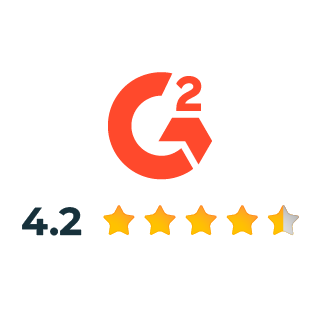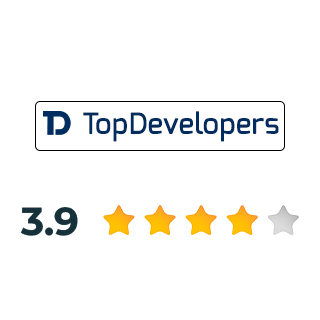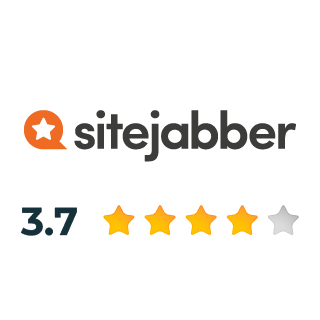JavaScript is everywhere. Firstly, whatever browse on the web, or read on social media, JavaScript is what drives and provides us with the required information. Before the 1990s DOT COM bubble, JavaScript was utilized to provide user interaction and validate input. JavaScript has come a long way since its inception in the early 1990s. Now whatever you see or read on the web as well as the input you give for forms and data processing, JavaScript processes it and deals with it.
Now wherever you see it, JavaScript is the dominant guy behind every piece of technology powering the web. JavaScript is a handy technology coming to helps developers and programmers develop applications and code. Nowadays, JavaScript has evolved into a more capable technology used for programming and coding different parts of the application.
Initially, when JavaScript introduced itself in the 1990s, it performed niche jobs. The jobs such as data processing and validation and providing responsive interaction through animating various form elements. But today the story has changed. Many technologies such as Angular, ReactJS and many other frameworks written have JavaScript under the hood powering them up.
Within the dynamic landscape of web development, understanding the Advantages and Disadvantages of Javascript is crucial for making informed decisions in crafting efficient and responsive digital experiences.
What is JavaScript?
JavaScript, a client-side language, enables websites to incorporate interactive elements and dynamic features, running through a web browser rather than a server.The user experience is more responsive and engaging as a result. However, the code can also be altered more easily by the user, which can cause security concerns. To build modern web applications, JavaScript is essential.
As a client-side language, JavaScript runs on the user’s web browser rather than the server. As a result, web pages can load quickly and be responsive to user interaction without having to send a request to the server and wait for a response.
JavaScript is a versatile language used by developers to create various online apps and interactive features, with both advantages and disadvantages to consider.
What are the Advantages of Javascript in web technology?
Many companies such as Netflix, Airbnb, PayPal and Medium employ and use JavaScript for the products that they have developed. There are small companies and startups as well who have adopted and embraced the use of JavaScript for their product stacks. This is because of a number of benefits that JavaScript brings to the table.
1. Common Language usage along with better team efficiency and resources:
- When developers and programmers use JavaScript to code parts of their applications using JavaScript, it leads to better team efficiency and productivity.
- This allows the developers to have a better understanding of the source code that happens within the team.
- Because of this, there is no such thing as a gap between front-end development engineers and back-end development engineers.
- All of the team members can function in conjunction and cooperation with one another. This reduces the team size as there is no need required to maintain and create two separate teams.
- One for the front end and the other for the back end. Due to this, the cost of hiring talent and employing them is reduced significantly within the organization or company. This becomes a great asset when it comes to managing the team using agile methodologies.
- When there is a common language that developers can use for all tasks such as backend and frontend, it becomes easy for them.
2. Extensive Code Reuse:
- When you use full-stack JavaScript development, you encourage code reuse by promoting efficient code creation and usage techniques.
- The development technologies encourage and promote this between the developers of the application.
- This is because JavaScript uses the DRY or Don’t Repeat Yourself principle. This encourages the reuse of specific code segments between front-end and back-end development platforms. This happens by sharing libraries, templates and models between the technologies used and employed to obtain the functionality in the application.
- You as a developer are able to reduce and reuse up to 40% of the code within the application thereby reducing the overall development cost by 50%.
- You can reuse the code for other projects up to 50%.
Also Read: JavaScript Trends in 2021 for Modern Web Applications
3. High Performance and Speed:
- When you use a combination of such front-end and back-end technologies, you promote high-speed development and build high-performance applications.
- Such applications scale fast and meet the demands of users and customers when it comes to the performance of such developed applications and websites.
- For example, Node JS promotes and provides high-speed development and scalable applications that are quite capable of meeting the demands of users and customers.
4. Huge Talent Pool:
- The number of developers and programmers who have the right skill sets and know-how in this particular technology is immense.
- These developers are competitive and provide you with the right expertise to develop applications using JavaScript technologies.
5. Widespread Support:
- JavaScript is a widely used programming language that is supported by all modern web browsers.
- This tool can be utilized to create interactive features that are accessible across various devices.
6. Remarkable Framework and Libraries:
- JavaScript-based frameworks/libraries are popular. Such as VueJS, AngularJS, ReactJS library, NodeJS runtime environment, and many more.
- All of which are JS-based, all of which are used in different types of application development based on the requirements.
7. Simple Syntax:
- JavaScript is a very beginner-friendly programming language.
- The syntax of this code is accessible to both beginners and experienced programmers.
8. Quick Execution:
- Since JavaScript runs directly in the browser, it can run quickly and provide a fast user experience.
Cons or Disadvantages of JavaScript Development –
No technology is going to be perfect. There are always some cons or disadvantages when it comes to using technology. Here are some of them.
1. Insufficiency along with computational heavy backend:
- When the question is about computationally heavy loads or thread-heavy loads, NodeJS provides a single-threaded operation that utilises a single core.
- So it is unable to do other processes or thread execution. This is the limitation of the NON-blocking I/O model that NodeJS uses and employs. This causes the application to be more CPU-intensive.
- This can have heavy backend computation that can be unnecessary and hog critical resources at times.
2. Relatively Young Technologies:
- JavaScript and its related technologies, despite being around for over 20 years, are still in their infancy.
- It will take time for developers and programmers to fully utilise and employ these technologies and put them to good use for application development efforts.
3. More technology to master:
- This is an effective 2con because there are more technologies to master when it comes to JavaScript development.
- The amount of emerging technologies is just absurd and humongous.
- So it can be a jack of all trades but a master of none story here just because of the exhaustiveness that exists in this JavaScript technology domain.
What is Javascript used for?
- JavaScript is a versatile language suitable for various web development tasks.
- JavaScript dynamic programming enables the addition of interactive elements to web pages.
- JavaScript code enhances user experience by being executed by the browser instead of the server.
- In addition to creating animations, validating forms, and implementing complex functionality.
- Nodejs is a popular tool for developing server-side applications using JavaScript.Which is a JavaScript runtime that allows developers to develop server-side JavaScript code.
- The Internet of Things (IoT) is an interconnected network of physical devices that can collect and exchange data. JavaScript is a powerful tool that can be utilized to develop Internet of Things applications.
- Basically, JavaScript makes websites more dynamic and engaging.
Read More: JavaScript frameworks: 10 Popular Framework in 2021
Concluding the Advantages and Disadvantages of Javascript in Web Development –
So we have shared with you the various advantages and disadvantages of JavaScript development. It depends on your preference for your application to have which functionality you need. If you want to Hire JavaScript Developers then contact us at enquiry@nimapinfotech.com with your requirements. We have the most talented and experienced developers ready to onboard your project.







































